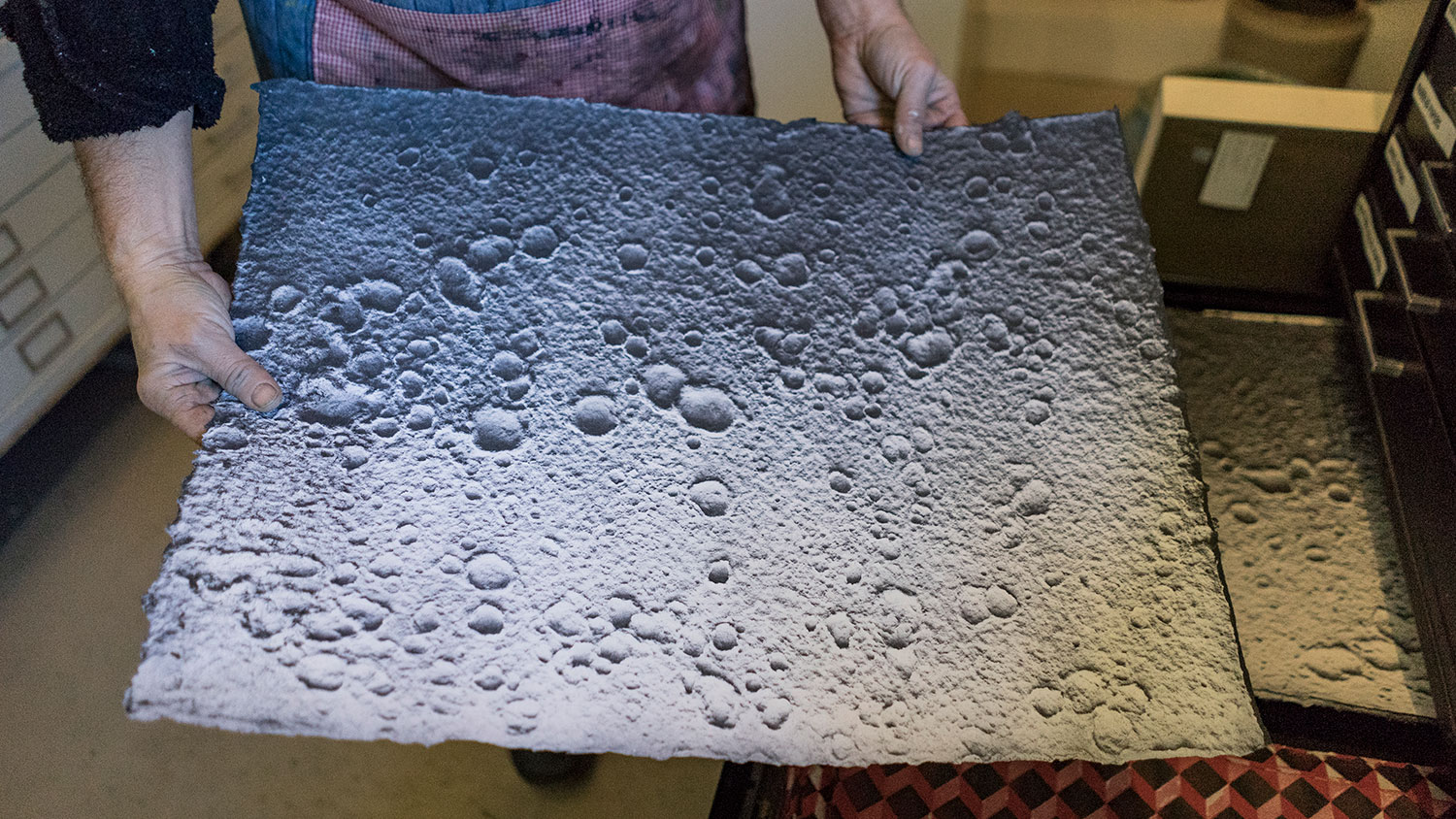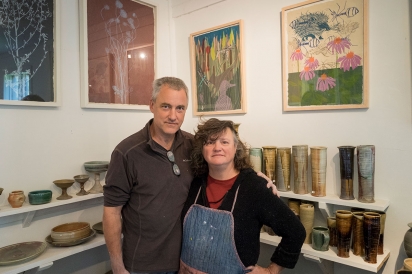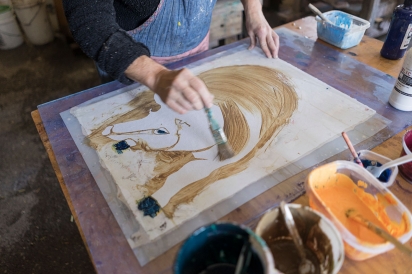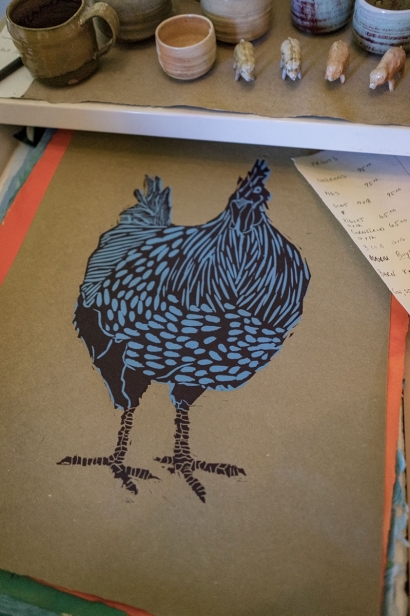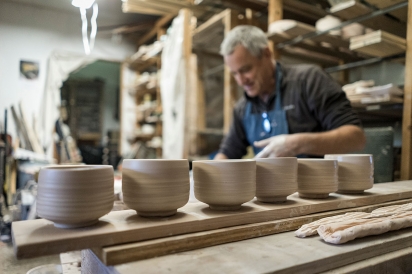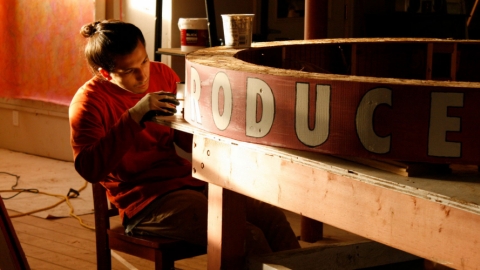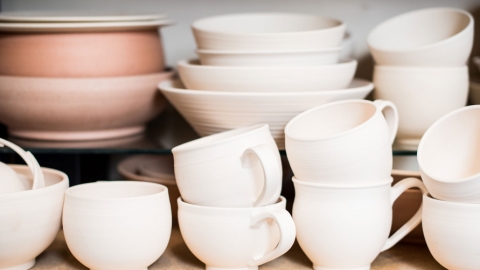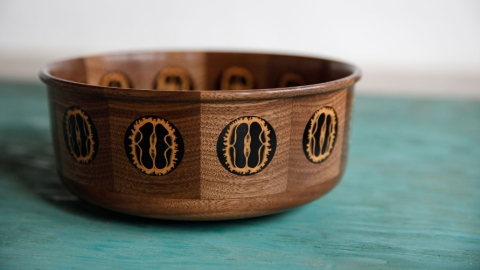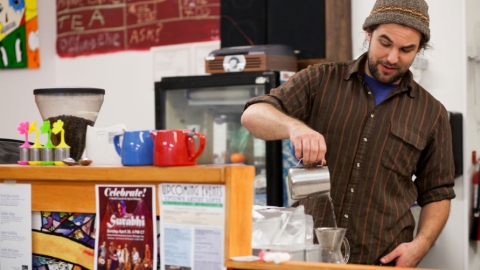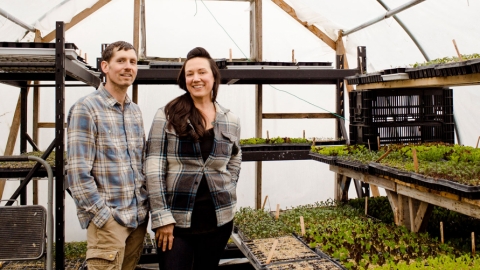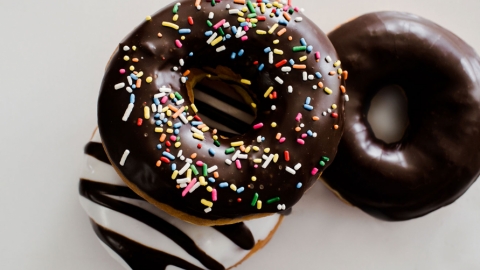Hook Pottery Paper uses natural and discarded materials to make art
Jon Hook and Andrea Peterson don’t believe anything is useless.
“What is waste?” Peterson muses. “A nutrient? A by-product that can be used?”
Inside their shared Hook Pottery Paper studio in La Porte, IN, the artists reuse and reintegrate materials as much as possible. Hook alchemizes local hay ash into mug glazes. Peterson creates handmade paper by pressing pulp made of Indiana corn husk or used-up baling twine, sometimes dyed with walnut ink. Their art is so innovative and in tune with natural processes that in July the Metropolitan Museum of Art in New York City requested a selection of the handmade paper for its permanent collection.
“We’re trying to use our energies several times,” Peterson says. “For instance, as we’re preparing our wood stove for our fall season, we’ll go ahead and burn wood that’s deadfall, and then we take that ash and I literally can use it to cook fiber because I need a caustic solution.” Then, she says, Jon can use that ash that is no longer caustic in his glazes.
“This tree has obviously lived its life and brought birds home or whatever, and then it’s heated our studio. And now the ash is able to make this paper usable for many people. Then the ash ends up on your coffee cup. It’s a long journey.”
Breathing life into often-discarded materials doesn’t stop in the art studio. Hook, Peterson and their two sons practice constant awareness of the natural world. And rather than operating on a philosophy of minimalism—use less, waste less— their sustainability grows out of abundance.
“We’re going one step beyond sustainability. We’re not only thinking about sustaining but being regenerative,” Peterson says.
The farm is overflowing. Stacks of mushrooms burst from bags shelved inside one of the greenhouses. Jars of ash stand sentinel over portrait prints of resident hens. Herbs and undergrowth crowd the trampled path to the backyard, where crops and animals grow up together.
And for patrons who travel to the studio, an art piece’s journey is as important to understand as the item itself. Slip a piece of handmade paper from Peterson’s drawer of works and you could be holding the threadbare blue jeans from a neighboring farmer. Clasp a mug thrown on Hook’s wheel and you might be clutching Queen Anne’s lace from across the street.
“We’re both working with as much local material as we can,” Hook says.
It’s been more than two decades since the pair moved from Chicago to the 10 hilly acres that make up Hook Pottery Paper and Turkey Foot Farm, the latter of which is run by their two sons, Ry and Lu Hook. When they arrived at their threshold in 1997, Peterson was nine months pregnant with Ry. The dream for their growing family had been simple: a home, a studio and space for Hook’s wood-fired kiln.
Peterson recalls, “We were like, we need to live where we want our kids to grow up. And I wanted to be in a natural environment again. I felt like everything they needed to learn they could learn here.”
The couple’s drive to harmonize their art and nature led them to research local flora and fauna as they settled onto the land.
Hook says, “I think the most important thing is that we instilled wonder in our boys. We didn’t get goats and turkeys and sheep and everything right away.” Instead they started with a small vegetable garden and grew from there.
In many ways, they sustain the plants and animals that sustain them—about 80% of their food comes from the backyard. But the goal is to share their knowledge and resources beyond their own family. Locally, they sell handmade soap and goat burgers. Fresh eggs, too. Food from Turkey Foot Farm lands on patrons’ plates at Patellie’s in Three Oaks, MI, and The False Front in New Buffalo, MI. Out of their relationship with local restaurants, Hook repurposes old fryer oil by dripping it into a controlled grease fire when he fires clay.
“I’ve knocked five hours off my firing time,” he says. “And now I can take a mug back to them and say ‘Your fryer oil just made this happen.’”
Over time, the artistic methods of repurposing and regenerating have layered into a distinct lifestyle. In the summers, they work long hours. After the autumnal killing frost, they turn to art and reading indoors—“and we sleep more,” Peterson says with a laugh.
She adds, “It’s been 21 years of discovering and building knowledge and resources. We’re collaborating with our material more than controlling it and manipulating it. We work together, whether you’re a plant fiber or…”
“It’s all part of the system,” Hook says.
Hook Pottery Paper & Turkey Foot Farm
756 W. 900 N. La Porte, IN
219.362.9478
hookpotterypaper.com


